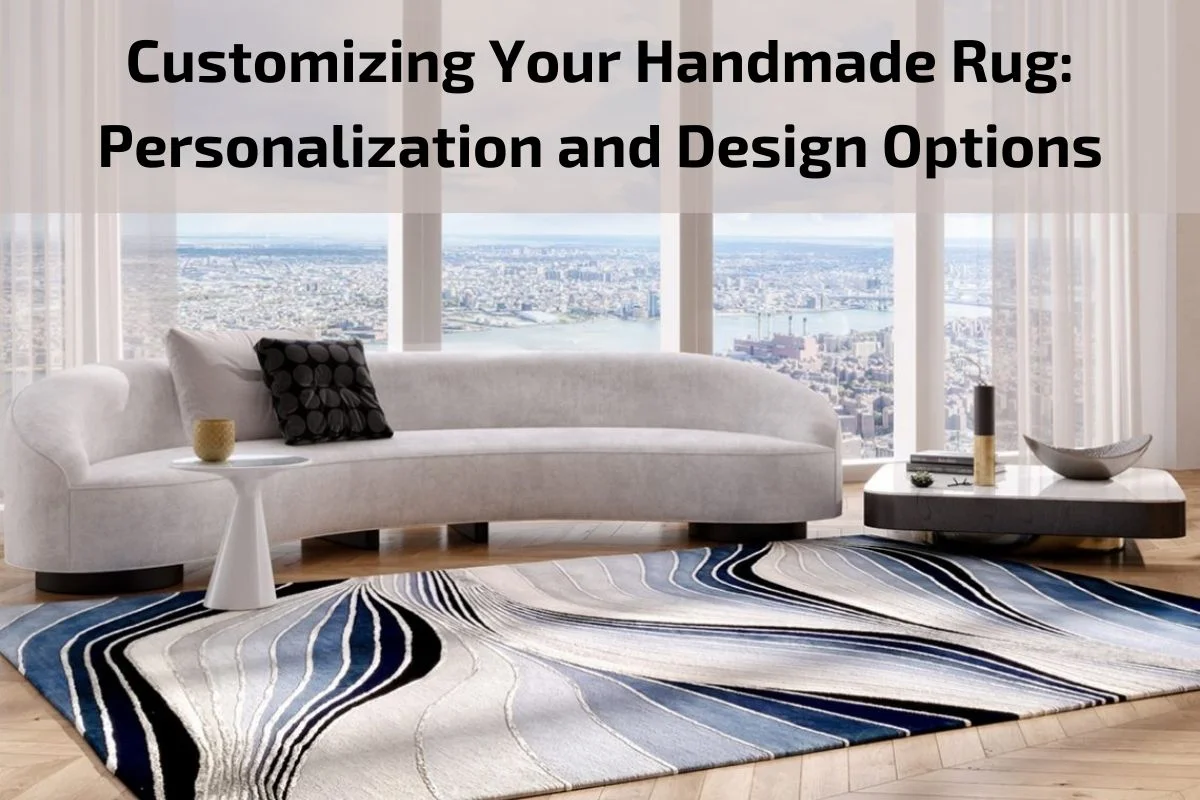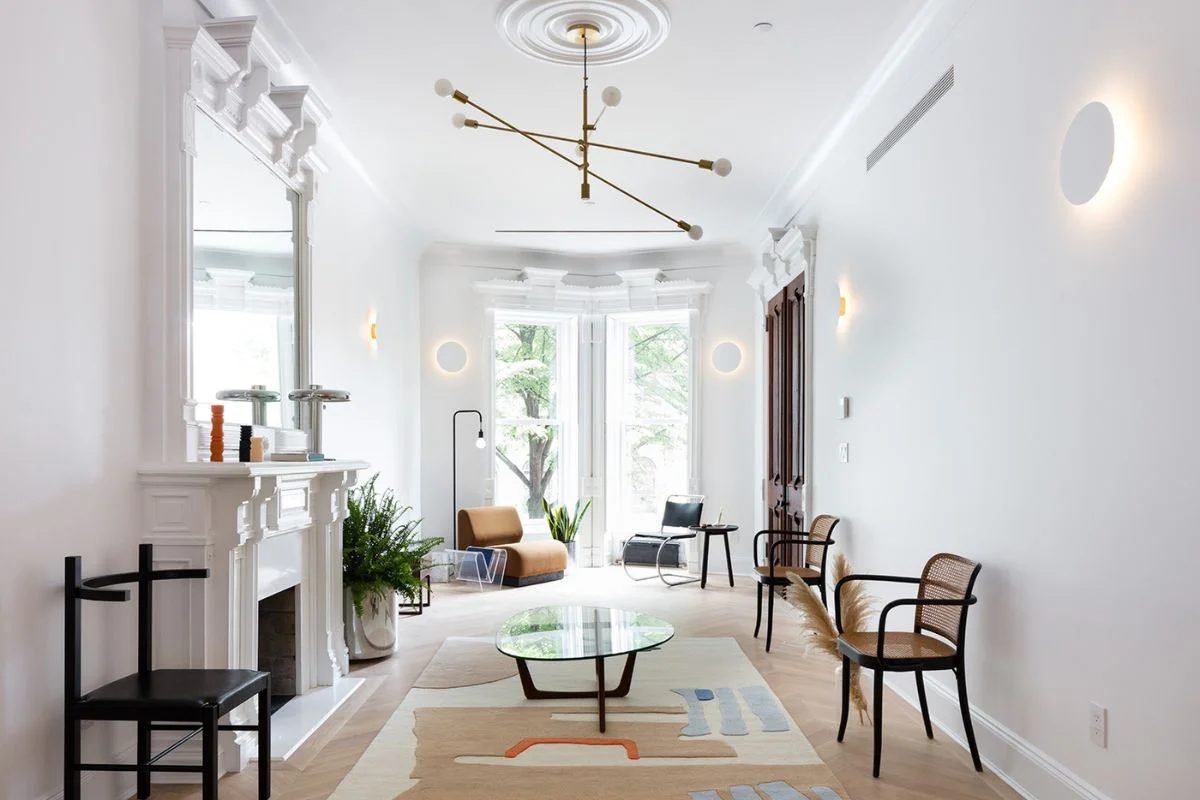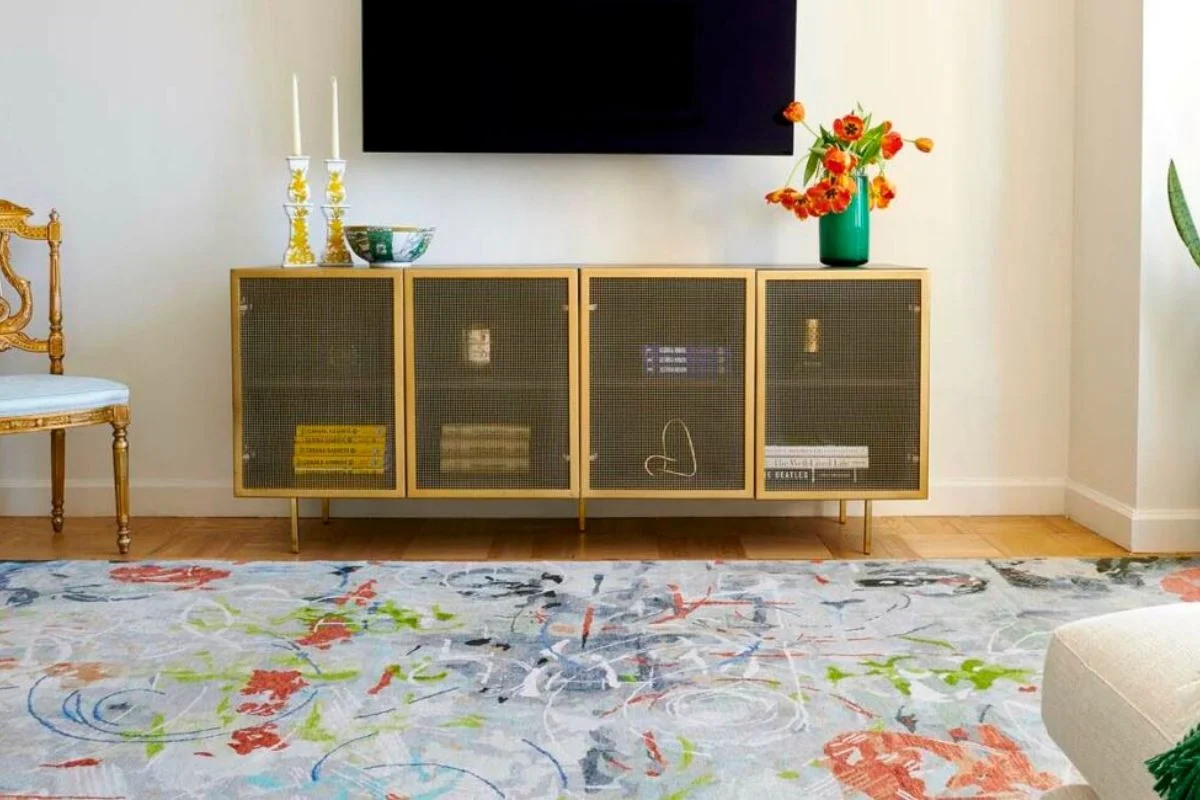
Handmade rugs are not just floor coverings; they are exquisite works of art that reflect centuries-old traditions and craftsmanship. While traditional handmade rugs boast timeless designs and patterns, there’s a growing trend towards customization and personalization in the world of rug design. In today’s dynamic interior design landscape, homeowners and designers are seeking unique ways to express their individuality and create spaces that reflect their personality and style.
In this exploration of customizing handmade rugs, we delve into the exciting realm of personalization and design options available to rug enthusiasts. From selecting bespoke patterns and colors to incorporating meaningful motifs and symbols, customizing handmade rugs offers endless possibilities for creating one-of-a-kind pieces that speak to the soul of a space.
Join us as we embark on a journey through the world of handmade rug customization, where creativity knows no bounds and every thread tells a story of artistry, heritage, and personal expression. Whether you’re a seasoned collector, a discerning homeowner, or a design aficionado seeking inspiration, this guide will illuminate the transformative power of customizing handmade rugs and the boundless potential they hold for elevating interior spaces into realms of beauty and individuality.
Brief Overview of the History and Significance of Handmade Rugs:
Handmade rugs have a rich and storied history that spans centuries and traverses cultures and civilizations. Originating in ancient civilizations such as Persia, China, and Turkey, handmade rugs were initially crafted as functional floor coverings to provide warmth, comfort, and insulation in nomadic tents and palatial estates alike.
The art of rug making evolved over time, with techniques passed down through generations and styles influenced by cultural exchanges and trade routes. Handmade rugs became cherished possessions, symbols of wealth, status, and artistic prowess, coveted by collectors and connoisseurs around the world.
Beyond their practical utility, handmade rugs hold profound cultural significance, serving as expressions of identity, tradition, and craftsmanship. Each rug is a testament to the skill and creativity of the artisans who meticulously weave together threads of wool, silk, or cotton to create intricate patterns, motifs, and designs.
Handmade rugs are imbued with symbolism and meaning, with patterns and motifs reflecting the cultural heritage, religious beliefs, and artistic traditions of the communities that produce them. From geometric shapes and floral motifs to symbolic representations of nature, animals, and mythology, handmade rugs tell stories of the past and embody the spirit of the people who craft them.
In today’s globalized world, handmade rugs continue to captivate with their timeless beauty, enduring craftsmanship, and cultural resonance. They adorn homes, offices, and public spaces, adding warmth, character, and a sense of heritage to the environments they inhabit.
As we celebrate the history and significance of handmade rugs, we honor the artisans and communities who have preserved and perpetuated this ancient craft for generations. Each rug is a testament to the human spirit, creativity, and ingenuity, reminding us of the enduring power of art to transcend boundaries and connect us to our shared humanity.

Types of Handmade Rugs
Handmade rugs come in a diverse array of styles, patterns, and materials, each reflecting the unique cultural heritage and artistic traditions of the regions where they originate. From the intricate designs of Persian rugs to the vibrant colors of Oriental rugs, handmade rugs offer a rich tapestry of choices for discerning collectors and enthusiasts. Here are some of the most notable types of handmade rugs:
Persian Rugs: Renowned for their exquisite beauty and craftsmanship, Persian rugs are among the most coveted and sought-after handmade rugs in the world. Originating from Iran, these rugs feature intricate designs, rich colors, and elaborate motifs inspired by Persian culture and mythology. Each region in Iran produces its own distinctive style of Persian rug, from the floral patterns of Isfahan to the geometric motifs of Tabriz.
Oriental Rugs: Oriental rugs encompass a wide range of styles and designs originating from countries such as Turkey, India, China, and Afghanistan. Known for their intricate patterns, bold colors, and luxurious materials, Oriental rugs often feature geometric motifs, floral patterns, and symbolic representations that reflect the cultural heritage and artistic traditions of their respective regions.
Kilim Rugs: Kilim rugs are flat-woven textiles traditionally produced in countries such as Turkey, Iran, and Afghanistan. Characterized by their vibrant colors, geometric patterns, and tightly woven texture, Kilim rugs are prized for their durability and versatility. These rugs are often used as decorative wall hangings, floor coverings, or even as saddlebags for camels and horses.
Dhurrie Rugs: Dhurrie rugs are traditional flat-woven rugs that originated in India. Made from cotton or wool, Dhurrie rugs feature simple geometric patterns, stripes, and motifs in vibrant colors. These versatile rugs are lightweight, reversible, and easy to maintain, making them popular choices for both indoor and outdoor use.
Tribal Rugs: Tribal rugs are handmade rugs crafted by nomadic or semi-nomadic tribes in regions such as Morocco, Afghanistan, and Central Asia. These rugs often feature bold geometric designs, tribal symbols, and earthy colors derived from natural dyes. Each tribal rug tells a unique story of the cultural identity and artistic expression of the nomadic communities that produce them.
Antique Rugs: Antique rugs are handmade rugs that are over 100 years old and are prized for their rarity, historical significance, and artistic value. These rugs often exhibit exquisite craftsmanship, intricate designs, and natural patina that reflect their age and provenance. Antique rug collectors seek out these treasures for their beauty, authenticity, and investment potential.
Integrating Handmade Rugs into Modern Interior Design
Incorporating handmade rugs into modern interior design can add depth, warmth, and character to any space. While handmade rugs are often associated with traditional decor styles, they also have the versatility to complement contemporary and eclectic interiors. Here are some tips for seamlessly integrating handmade rugs into modern interior design:
Layering and Texture: Embrace the trend of layering rugs to add visual interest and texture to modern spaces. Pair a large, neutral-toned area rug with a smaller, intricately patterned handmade rug for a dynamic and layered look. Experiment with different textures, such as a plush wool rug layered over a flat-woven Kilim rug, to create depth and dimension.
Contrast and Balance: Use handmade rugs to introduce contrast and balance to modern interiors. Opt for rugs with bold colors, geometric patterns, or intricate motifs to create visual focal points in minimalist or monochromatic rooms. Balance vibrant rugs with neutral furniture and décor elements to prevent the space from feeling overwhelming.
Statement Pieces: Let handmade rugs serve as statement pieces that anchor the design of a room. Choose rugs with unique designs, oversized proportions, or striking color palettes to make a bold statement in modern living rooms, dining areas, or entryways. Allow the rug to take center stage and build the room’s decor around its distinctive aesthetic.
Mixing Styles: Don’t be afraid to mix styles and aesthetics when incorporating handmade rugs into modern interiors. Blend traditional rug designs with contemporary furniture and decor to create an eclectic and visually stimulating space. Pair a vintage Persian rug with sleek, mid-century modern furnishings for a chic and unexpected juxtaposition of styles.
Creating Zones: Use handmade rugs to define functional zones within open-concept living spaces. Place rugs strategically to delineate seating areas, dining spaces, or reading nooks, creating distinct zones that flow seamlessly within the larger room. Choose rugs that complement the scale and proportions of the furniture to create cohesive and inviting areas for relaxation and socializing.
Embracing Sustainability: Consider the sustainability and ethical sourcing of handmade rugs when integrating them into modern interior design. Opt for rugs made from natural fibers, such as wool or cotton, that are harvested and produced using environmentally friendly practices. Support artisan communities and fair trade initiatives that promote ethical craftsmanship and cultural preservation.
Layering with Modern Elements: Combine handmade rugs with modern design elements to create a harmonious blend of old and new. Pair a vintage Moroccan rug with sleek, contemporary furniture and accessories for a stylish and eclectic look. Experiment with mixing materials, finishes, and textures to create a balanced and visually compelling interior.
Customizing Your Handmade Rug: Personalization and Design Options
Customizing a handmade rug offers a unique opportunity to infuse your personal style, preferences, and story into a one-of-a-kind piece of art for your home. Here’s a closer look at the personalization and design options available when customizing handmade rugs:
Bespoke Patterns: Work closely with skilled artisans or rug designers to create bespoke patterns that reflect your individual taste and vision. From intricate geometric motifs to abstract designs inspired by nature, the possibilities for custom patterns are endless. Consider incorporating meaningful symbols, family crests, or cultural references into the design to imbue the rug with personal significance.
Color Palette: Choose from a wide range of colors and hues to customize the color palette of your handmade rug. Experiment with bold, vibrant colors to make a statement or opt for soothing, muted tones for a more subtle effect. Consider the existing color scheme and decor of your space to ensure that the rug complements and enhances the overall aesthetic.
Material Selection: Select the material and fiber composition of your handmade rug based on your desired look, feel, and performance. Wool, silk, and cotton are popular choices for handmade rugs, each offering unique qualities in terms of texture, durability, and sheen. Discuss your preferences with the rug artisan to determine the best material for your custom design.
Size and Shape: Customize the size and shape of your handmade rug to perfectly fit the dimensions and layout of your space. Whether you need a small accent rug for a cozy reading nook or a large area rug to anchor a living room, tailor-made sizing ensures a seamless and harmonious integration into your interior design.
Texture and Pile Height: Consider the texture and pile height of your handmade rug to achieve the desired look and feel. Choose from plush, high-pile rugs for a luxurious underfoot experience or opt for flat-woven rugs for a sleek and modern aesthetic. Experiment with different textures and weaving techniques to add depth and dimension to your custom design.
Quality and Craftsmanship: Invest in quality craftsmanship and attention to detail when customizing your handmade rug. Seek out skilled artisans or reputable rug manufacturers with a proven track record of excellence in rug making. Insist on superior materials, meticulous handiwork, and sustainable practices to ensure that your custom rug stands the test of time.
Collaboration and Communication: Collaborate closely with rug artisans or designers throughout the customization process to bring your vision to life. Provide feedback, share inspiration, and communicate your preferences openly to ensure that the final product meets your expectations and reflects your unique style and personality.

Maintaining the Beauty of Handmade Rugs: Care and Cleaning Tips
Handmade rugs are not just functional floor coverings; they are exquisite works of art that require proper care and maintenance to preserve their beauty and longevity. Here are some essential care and cleaning tips to help you maintain the beauty of your handmade rugs:
Regular Vacuuming: Vacuum your handmade rug regularly to remove dust, dirt, and debris that can accumulate over time. Use a vacuum cleaner with a brush attachment or a low-suction setting to gently clean the rug’s surface without causing damage to the fibers.
Rotate Periodically: Rotate your handmade rug periodically to ensure even wear and fading. Rotating the rug every few months helps distribute foot traffic and sunlight exposure evenly across the rug’s surface, preventing uneven wear and color fading in high-traffic areas.
Spot Clean Spills Promptly: Attend to spills and stains immediately to prevent them from setting into the rug fibers. Blot the affected area with a clean, absorbent cloth or paper towel to absorb excess liquid, then gently blot with a mild detergent solution and water. Avoid rubbing or scrubbing the stain, as this can cause it to spread and penetrate deeper into the fibers.
Professional Cleaning: Schedule professional cleaning for your handmade rug at least once a year, or as needed, to remove embedded dirt, stains, and odors. Professional rug cleaners have the expertise and equipment to clean and restore handmade rugs without causing damage to the fibers or colors.
Protect from Sunlight: Protect your handmade rug from prolonged exposure to direct sunlight, as UV rays can cause fading and discoloration over time. Use window treatments or UV-blocking films to filter sunlight and minimize its impact on the rug’s colors and fibers.
Use Rug Pads: Place rug pads underneath your handmade rug to provide cushioning, prevent slipping, and protect the underlying flooring surface. Rug pads also help extend the life of your rug by reducing friction and wear caused by foot traffic and furniture movement.
Vacuum Underneath: Occasionally, lift and vacuum underneath your handmade rug to remove dust and debris that may accumulate on the flooring surface. This helps prevent dirt and grit from settling underneath the rug and scratching the flooring material.
Address Pet Stains and Odors: If you have pets, promptly clean up any accidents and treat pet stains and odors with specialized pet stain removers and deodorizers. Follow the manufacturer’s instructions and test the products on a small, inconspicuous area of the rug before applying them to the stained area.
conclusion
In conclusion, handmade rugs are not just floor coverings; they are timeless pieces of art that enrich our homes with beauty, warmth, and character. From their intricate designs and exquisite craftsmanship to their cultural significance and personalization options, handmade rugs embody the finest traditions of craftsmanship and creativity.



